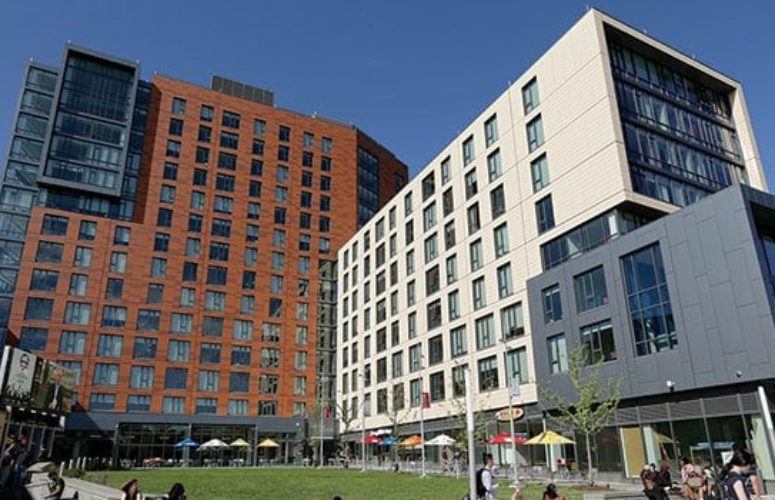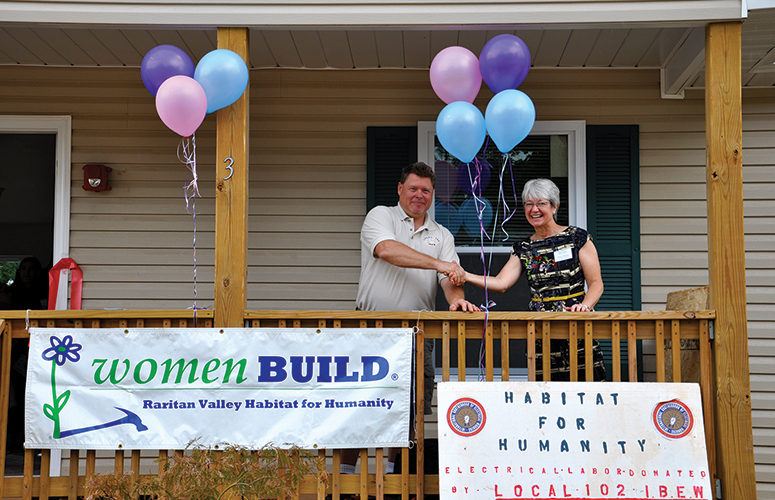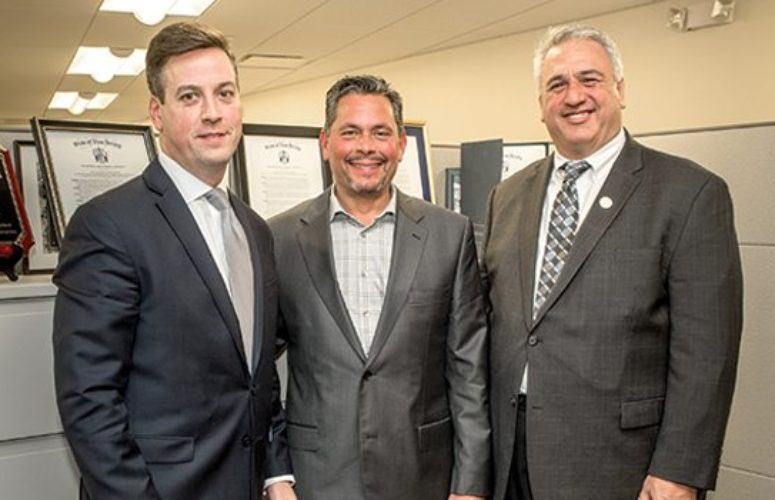
Construction Trades Help Build a Better NJ
This next quarterly installment of New Jersey Business magazine’s Trade-Talk Roundtable series focuses on the challenges and opportunities a number of leading construction trade union leaders face when helping to spur economic development.
By Anthony Birritteri, Editor-in-Chief On Jan 11, 2016The construction trades, once the American-Dream starting point for many immigrants whose toil and sweat built New Jersey’s highways, bridges, tunnels, buildings and water infrastructure, are now reinventing themselves. In what was once a generational trade – where grandfathers, fathers and sons found fulfilling careers – these unions are now challenged with an aging workforce and finding the next generation of workers in a world in which most high school students are expected to go to college.
The Great Recession of 2008-2009 also hit the industry hard, with thousands of jobs put on hold due to the collapsed economy. In their efforts to put members back to work, various construction trade unions have and continue to work hand-in-hand with developers to ensure projects come to fruition. It is a relationship born out of necessity.
For the union representatives participating in this next Trade-Talk Roundtable series, recruitment, ongoing training, economic development and continued infrastructure investment are vital in order to keep their respective members at work, earning a healthy paycheck and benefits.
In the following in-depth Q&A, the plan of action for the construction trades going forward is revealed. Participants in this roundtable include:

UTCA, based in Wall, was established 50 years ago and consists of approximately 1,000 members. These contracting firms are active in the areas of heavy, highway, civil, utility, environmental remediation, site and marine construction. “We basically do all types of construction except build the buildings that people occupy,” Briant explains.
UTCA strives to improve working conditions for the construction industry through its work in legislative and regulatory matters, safety training, labor relations, specifications development, group cost savings programs and individual problem solving. The organization is the state chapter of the national American Road and Transportation Builders Association in Washington, DC.
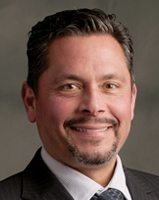
IBEW Local 102 consists of 3,300 members who work for some 300 electrical contractors. Its footprint covers 12 counties, eight in northern New Jersey and four in Pennsylvania. Putting its skilled union electricians to work and helping developers win project approvals are among the union’s many functions. Delle Cava says that Local 102 is similar to a temporary employment agency or outsourcing company in that it also handles self-insured healthcare and defined-benefit and defined-contribution retirement plans for its members.
IBEW trains its members at a state-of-the-art, 16,000-square-foot training center at its headquarters, where apprentices and experienced electricians continuously learn the trade.
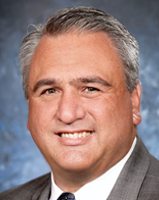
IUOE Local 825 consists of 6,800 men and women who Lalevee describes as “the heavy equipment operators who build our roads, bridges and buildings.” His members work for some 1,400 employers in New Jersey and the five southernmost counties of New York, west of the Hudson River. Besides negotiating contracts and benefits on behalf of its members, Local 825 also provides training at its training center in Dayton. An additional center is in Wawayanda, New York. Lalevee reports that, collectively across the country, IUOE spends some $150 million per year on training endeavors. Locally, it spends some $4 million on training. “This is the lifeblood of what we do,” he says.
Lalevee was nomined to the state Transportation Trust Fund Authority in 2011 by Governor Chris Christie.

CCT is a labor management cooperative that is overseen by a board of trustees evenly representing labor and management. The mission of the organization is to promote the message that the partnership provides public and private owners in the construction industry with on-time, on-budget, top-quality construction projects. “Our focus is to serve as the marketing arm of both the Northeast Regional Council of Carpenters and our Carpenter Contractors,” McCabe says.
In 2014, the Empire State Carpenters Labor Management Funds and the NJ CCT merged. Today, this partnership combines the resources of the Northeast Regional Council of Carpenters, which represents 1,000 contractor partners and 30,000 carpenters.
Q: Based on the work your members are doing, how is the New Jersey economy faring?
McCabe: The markets that are faring well over the last year or so are healthcare, hospitality and education, especially higher ed. Higher ed has been the work vehicle for all of us.
Lalevee: As we see the raising of the Bayonne Bridge [to allow for larger cargo vessels], we see a lot more opportunity on the warehousing side. We also see a lot of energy work, as gas fired plants are being built. Natural gas pipeline work is also spreading through the state as a benefit of the Marcellus Shale in Pennsylvania.
Delle Cava: For us, the hot sector is utilities … it is all of the work that followed after Superstorm Sandy. What has cooled off significantly is private-sector work, in particular big pharma. I think that between all of the mergers and acquisitions going on in that industry, it doesn’t seem to be expanding. Data center work also quieted down, and solar has gone cool due to legislative issues.
Briant: It is a mixed bag for our industry. On the transportation side, it has been very light, and the competition is fierce. Those who do get work are getting it at very minimal mark up, if any. Our transit market had been between $400 million – $450 million a year. For the past five or six years it has barely been over $200 million.
What has been helpful, unfortunately, was Superstorm Sandy. It caused a lot of damage, but it required a lot of emergency repair work. Now, federally funded Sandy work is hitting the street.
I am also the active chairman of the New Jersey Environmental Infrastructure Trust, and we actually have $1.2-billion worth of applications into us to get loans to do water/sewer work. That area is going well and improving every month.
Q: What is driving healthcare and higher education right now?
McCabe: It has been the P3 legislation [the higher education bond issue] that passed a few years ago. It has enabled higher education institutions to embark upon their capital plans that were in their pipeline. Hospitals also need to enhance their capabilities. There is so much going on within that industry – with mergers taking place – that it has become incredibly competitive. The preponderance of private entities in healthcare means institutions have to maintain or upgrade their facilities to meet the needs of the new market. I also think demographics are a driver. The Baby Boom generation is putting pressure on demands.
Q: Are you also looking forward to the various natural gas pipeline projects?
Lalevee: Absolutely. When we look at the footprint of New Jersey, there is [South Jersey Gas’] 22-mile BL England project, [New Jersey Natural Gas’] 30-mile Southern Reliability Link through Burlington, Ocean and Monmouth counties and the Penn East project, 30 some miles of which is on our side of the Delaware River. So energy expansion is a great thing.
Q: Regarding the Penn East Pipeline, there are a lot of rumors that many of the jobs are going to come from out of our area. What are you doing to ensure these projects employ New Jersey workers?
Lalevee: We hear that all the time. We have been running programs at our training centers specific to natural gas pipeline installation for 25 to 30 years. We are very proud of the fact that we capture most of that work when it gets here. We take training very seriously, so that when jobs like this come, we have the people for them. Of the 120 operating engineers working on the recent piece of Transco’s Skillman Loop pipeline project in Hunterdon County, more than 100 of them were our people.
Yes, it is a traveler’s market among the four trades involved, but this is something we take seriously because typically these jobs involve a lot of overtime, usually six days a week, usually 10-hour days. It is a great opportunity for people to do very well for themselves. We don’t like to concede those jobs to people who don’t live here.
When it comes to the pipelines in general – whether it is town meetings or interfacing with Federal Energy Regulatory Commission (FERC) – there is really no button along the approval process line that we don’t touch or go after aggressively.
Q: How are your organizations working hand-in-hand with businesses to keep your members employed and the economy growing?
Delle Cava: We try to be active in the business community, such as partnering with the New Jersey Business & Industry Association and economic development corporations in our area. We are also partners with Choose New Jersey. We also try to meet with developers as soon as they announce an intention to build. We want to get in there early and help them throughout the entire process. We try to remove whatever environmental or political obstacles are in their way.
Lalevee: We try to get to development projects early and assess what the landscape may be and how we may bring a project to fruition. … All we ask for is the “at bat” for our contractors to bid the work.
When the economy was really at the bottom, we partnered with the carpenter unions, sat down with our heavy and highway contractors and talked about projects before they came out, looking at where we could help make things more efficient. Through that process, billions of dollars’ worth of contracts went into union’s and contractors’ hands.
Delle Cava: We also try to help [developers] find financing if they have problems. We also attend town meetings and voice our opinion, as tax payers, as to why the project should be built. We did that with a Whole Foods project in Parsippany that was rejected a couple of times. That will now be built.
McCabe: Predating 2008 and the Great Recession, which completely redefined the industry for the foreseeable future, our leadership was already speaking to market awareness. Part of that discussion was the ability to provide investment to the developers themselves through our pension annuity, health and welfare funds. Our organizations collectively started a specific investment fund to identify projects in the state for which we could help finance and put forth our resources.
Lalevee: The Novo Nordisk headquarters is an example of that. Part of the project was funded by union pension funds, ours being one of the four [participating].
Q: How are the state and the Christie Administration helping your workers and the construction trades overall?
Briant: If there is no market for our members in New Jersey, there is no work … then we are out of business. So, the Christie Administration has been providing funding for various types of construction. They have been inducing businesses to stay and expand here through EDA grants and loans, as well as providing funding for construction programs overseen by the Department of Transportation, the Department of Environmental Protection and Department of Treasury. So, that is how the administration has been working with the industry.
Lalevee: I think the administration did a good job in appointing the Lt. Governor into a position where she is focusing on business attraction and retention, whether it’s the Business Action Center, Choose New Jersey or the other different components of the Partnership for Action.
For operating engineers, the governor specifically found a way to get a multi-year Transportation Trust Fund (TTF) solution, although we are in the last year of it and have to figure things out again. Additionally, this has been the first administration I can remember that, just from a dollar-per-dollar basis, has equalized Port Authority of New York & New Jersey investments to some degree because New Jersey was absolutely on the wrong end of the stick for a long time. The governor did a good job in putting his foot down and saying, “I want some balance in this.” Even if it is not a dollar-per-dollar balance, at least now there is a discussion and more negotiation about what New Jersey gets out of the pie.
Concerning the Gateway Tunnel funding project, it is great to see that Senator Booker was the catalyst here. It was also great to see Senator Schumer and Governors Christie and Cuomo get to the table and figure this out. There is no secret that we need another tunnel, but it’s good to see a bi-partisan effort to get there. I think there are people under a big gold dome in Trenton and a big white dome in Washington, DC who could learn a lot about how people of different philosophies can get together and identify a solution to a problem.
Briant: Concerning the Gateway Tunnel, it will be some time before we get actual shovels in the ground. There is a long process that needs do go forward. Many agreements and environmental processes need to take place. However, not only is it going to be a tremendous lift for the construction industry and our unions, it is going to be an economic boon because we need to keep trade open, we need to keep people moving back and forth between New Jersey and New York. That will bode well for our economy.
Q: What are you all advocating for in Trenton and Washington, DC?
Lalevee: For us, it is the renewal of the Transportation Trust Fund. That has almost been our complete focus because we are at the end [of funding]. I can’t imagine what else can be done other than to face some very difficult choices. In Washington, we are seeking some changes to the Affordable Care Act. There are fees that are disastrous to the funds that our organizations run because that is money that should be going to the participants, but it is not. It hurts the efficiency in the way we operate health insurance.
Delle Cava: In Trenton, it’s fiscal responsibility, public infrastructure investment, and fostering private-sector growth. We need to seriously understand that we are in competition with 49 other states for businesses, and the rest of the world, in a lot of cases. We need to get politics out of the way of the developers and allow them to build and allow companies to thrive here.
McCabe: The private sector likes clarity. It doesn’t like ambiguity … it’s reliability and predictability. We like that too. The more predictable the private sector is, the more predictable we will be toward our members and contractors.
Q: What are some of the issues the real estate industry faces that, in turn, impact your organizations and members?
Lalevee: It’s everything that adds up to 30 percent of a project being soft-cost pieces. It seems to be every time a decent project comes up, it just gets grounded in the dust along the bureaucratic trail. We just went through it in New York where we are building a new training center. If I have to go to one more town meeting to re-explain one change in a shop drawing … it is almost ridiculous. You wish there was a point person to vet any last minute issues, so that we wouldn’t have to reappear before a planning board because we changed a metal railing somewhere.
Q: It’s usually the perception that the state is in everybody’s way, but is the higher percentage of bureaucracy more on the local level?
Lalevee: Home rule makes the regulatory environment difficult.
Delle Cava: I would agree that it is the local politics that negatively impacts these projects. The approval and permitting processes are arduous and torturous. The fees are also high.
Part of the problem in New Jersey is that what you build in one town [affects] another. Rather than letting the business get up and running, we scare them away. You get companies wanting to come in and invest hundreds of millions of dollars in our state and we always find a way to talk them out of it. We know because we see the projects as they come out as ideas, but we see 90 percent of them never getting built.
Q: Tell me about the quality of your workforce. What are their training needs?
McCabe: Training is essential to the long-term growth of our organization. We invest millions of dollars in training. We recognized that with the changes within the industry, the market demands and advancements in technology, a four-year apprenticeship program just wasn’t good enough. We went to a five-year program.
Lalevee: We strive to stay on the cutting edge to train people to operate the new machines. For the Operating Engineers, our annual spend on training is about $150 million. For us, it is the lifeblood of what we do. One of the other things we do is partner with some of the other trades so that we are all on the same page when we go out to a project. The objective is to make the contractor more competitive.
McCabe: Another issue we are contending with is identifying where the next worker is going to come from. We are facing an aging workforce. It is no longer a legacy – grandfather, father to son – industry. So, it’s identifying where we will find the next carpenter, man or woman. We also have to be reflective of the demographic changes taking place.
Briant: We had different generations going through the unions, where construction, for them, was an entryway into the workforce. You had the Irish, then the Italians, then the Portuguese all on the heavy laborer side. However, when you start getting into third and fourth generations, those people are looking to go to college and do other types of work. So, we need to be able to attract young people into the industry and show them that they can make a good living if you don’t go to college. You can buy a home, you can send your kids to college, and you can save for retirement. … the construction trades allow people to do that.
Lalevee: To identify the new workforce, we hired an individual who is tasked with visiting almost every high school and vo-tech school. For us, one of the challenges is going to the urban centers. You don’t necessarily find an operating engineer there. If you live in a high rise apartment building, you are going to see an electrician, a carpenter or a plumber come fix your dwelling when something goes wrong. Most of our people will come from the farm areas. These are kids who grew up on farm tractors, and are attracted to that kind of thing. So it is very hard to work on diversity. However, our outreach individual is trying to make inroads to urban centers. It’s not always easy.
Delle Cava: We have a 16,000-square-foot training center and our apprentices undergo a five-year program which is 900 school hours, 8,000 hours on-the-job training and around 35 hours of community service. In addition to that, as an option, we offer additional classes that we pay for. We also do mandatory OSHA 30-hour training for all of our employees. We have mandatory journeyman reeducation and we partner with Union County College, and offer members a myriad of course at night. It’s everything from English as a second language to project management. Someone could end up with an associate’s degree from UCC.
We have also invested in a very large computer lab to teach computer aided design and building image modeling.
On the other hand, when a new technology comes out, there is not as much work for our guys because processes are more efficient. The building trades of the past would have fought new technology, but we embrace it. We train our people on it before it hits the market. We know it is a reality, so we want to be the first ones installing it.
Briant: With our partners, we pay training funds per hour for our union workers through the Safety and Education Training (SET) fund. We have two large state-of-the-art training facilities; one in Folsom and one in Aberdeen. In Folsom, we just completed a $5.8-million investment. We conduct indoor training for our members year round. We have professional safety training with laborers throughout the year. Hundreds and hundreds of their members are trained in different work areas: reading plans, pipe fusing, laying pipe and concrete, finishing work, etc. We also pay into the training fund for the Operating Engineers and its training center.
We also get involved with colleges to train engineers. We work with the New Jersey Institute of Technology and Stevens Institute of Technology. We give away scholarships with a few of the other associations and fund about $180,000 a year for college students to come work as interns with our contractors.
Q: What issues are you facing regarding prevailing wage?
McCabe: With prevailing wage, it is always about entrusting that there is proper enforcement. The trades must ensure that particular cases brought to the New Jersey Department of Labor (DOL) are vetted correctly and are solid. Then hopefully the DOL can do what it does, and does well.
Unfortunately, a prevailing wage [case] is not looked upon as an issue that the attorney general’s office or prosecutors look at as substantive to pursue. We have continuously made the argument that the state is losing out on considerable amounts of money and resources because of the lack of follow-through in pursuing these cases. It’s beyond the four walls of DOL. If there was a concerted effort to do that, one or two cases would send a message throughout the industry.
Briant: When you have prevailing wage violations, it is typically on the smaller contracts. On the larger projects, there are larger staff, more scrutiny and review of the certified payrolls.
Q: What are some of the trends and issues around the cost of insuring construction sites, and what are some of things you are doing to control those costs?
Briant: There are so many factors that go into insurance. General liability seems to be under control right now. One of the issues is the rising cost of workers’ comp. That is becoming increasingly more expensive. There are numerous reasons why, but construction is a difficult lifestyle. People tend to have injuries.
We are just starting to look at ways to try to bring that under control. Our members have done things in the industry with their managed care, and we try to work with our labor partners relative to that. It’s quite a complicated process. If someone is permanently hurt and they can’t work anymore, it is costing us quite a bit of money. We see that at the end of a worker’s career, and we are seeing a rise in that.
McCabe: I think there is a discernable difference when you talk about culpability or exposure to liability when you have the trained workforce that we have. We have extensive drug testing for apprentices and members, based on the type of work they are doing.
Q: Overall, what are the benefits of hiring construction trade union workers?
Briant: From the contractor’s perspective, having union workers is a very efficient way to manage your labor force because in construction, your work volume goes up and down. Some days you may have five projects, other days, two projects. So your workforce increases and shrinks. With the unions, you hire as many people as you need. They supply you with trained craftsmen who tend to be very productive.
Lalevee: It circles right back to predictability. You will know what the competency level of the worker is. Pat [Delle Cava] referred to us temporary employment agencies. That’s what we all are, but you can pick up a phone and ask for a certain level of qualifications inside each one of our trades and you know what you are going to get. You can pretty much operate a business of one or two people and have 100 employees tomorrow. So, you are never really out of bidding any job.
Delle Cava: Obviously, the safety and technical training of our people means there is value here. Not to say some nonunion employers don’t possess some of these skills. However, if you are delayed in opening a supermarket, every day those doors aren’t open you might be losing $100,000. So, if you want a job brought in on time and under budget with high quality people, you get the whole machine with us as far as helping you with whatever obstacles might be thrown your way.
I think the majority of the state is waking up that we have a lot to offer.
Related Articles:




